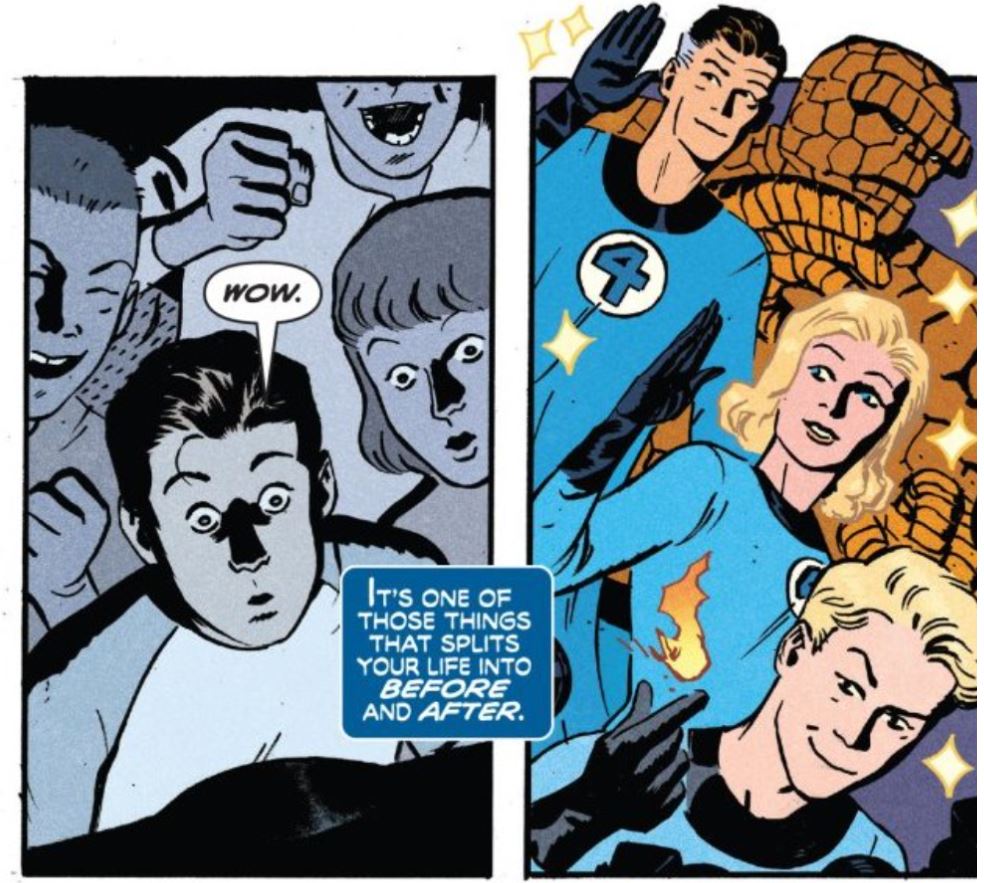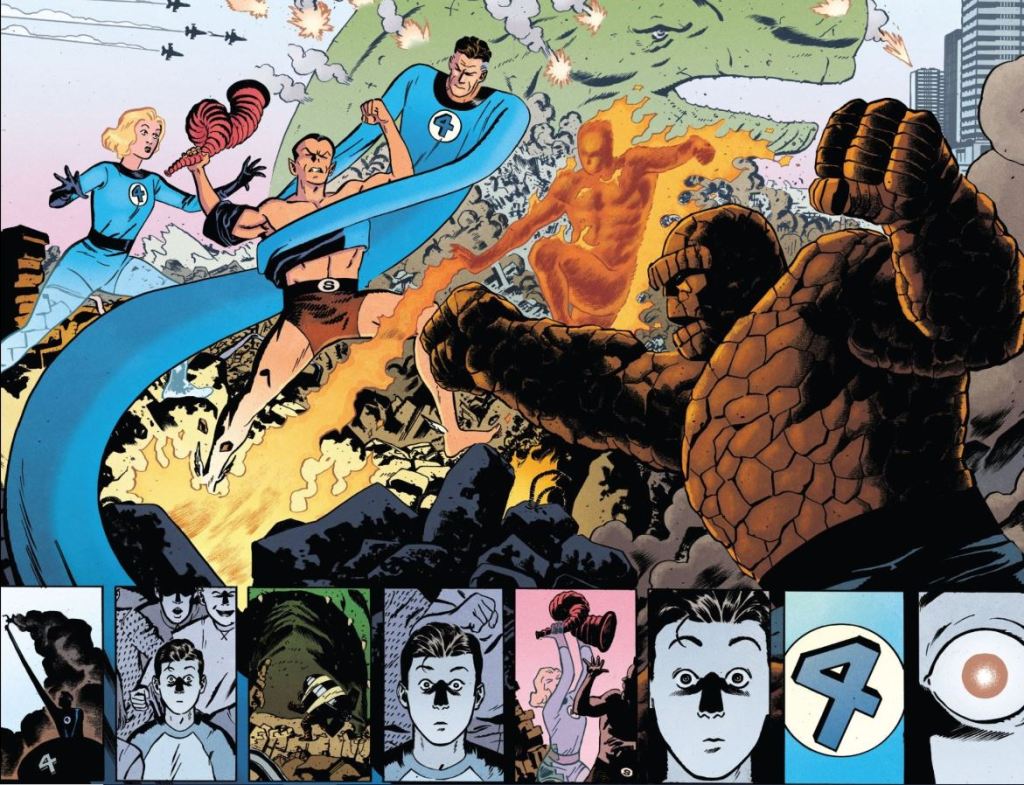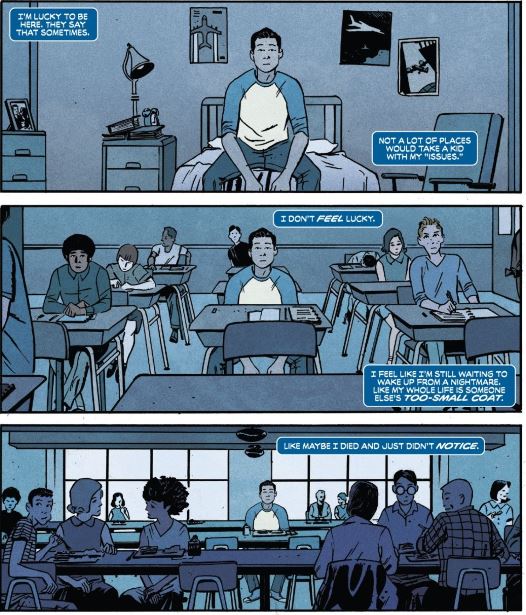Why X-men: Marvels Snapshot #1 is the best comic of 2020
I don’t get to read a lot of new comics these days. Life is too hectic to go to the comic shop every week and frankly, comics are too expensive for me to buy all the ones I want to read. So, instead I tend to wait for the trade or Marvel Unlimited style service releases. That said I do buy the occasional new comic on Comixology when something speaks to me. This time I managed to find my Best Comic of 2020.That comic was X-men: Marvels Snapshot #1.
Back in September, I purchased the issue for a couple reasons: 1) I am a lifelong Cyclops fan, and I will grab any solo story he is in and 2) It was written by Jay Edidin, co-host of Jay and Miles X-plain the X-men and I wanted to support him. I find that he understands Cyclops better than most writers on there and I legitimately wanted to see what he had in store for the character.
I am glad I grabbed this issue because it captures what I love about Scott Summers and spoke to me on a personal level. I found a connection to the character in this issue that really underlines what I love about the Scott Summers as whole.
So, let me explain to you why X-men: Marvels Snapshot #1 was my comic of 2020. This will be a spoiler free review. Before we begin let’s introduce the creative team:
X-Men: Marvels Snapshot #1

X-men: Marvels Snapshots #1
“And the Rest Will Follow”
Writer: Jay Edidin
Artist: Tom Reilly
Color Artist: Chris O’Halloran
Letterer: Tom Orechowski
“Four people climb into a cockpit. Strap in. Take off. Something goes horribly, horribly wrong.”

The Origin of Scott Summers
The issue begins with this opening statement. It is an explanation of the nightmares Scott Summers experiences almost nightly as he his haunted by the plane crash that injured him for life and separated the family for years. X-men: Marvels Snapshot is the origin story of Scott Summers before he arrives at the Xavier Institute. It strips away at the layers of confusion that surrounds Scott’s past in relation to Mr. Sinister.
Jay Edidin does this not only to avoid the inherit contradictions that come from Scott’s origin stories but also to put the focus on Scott coming of age during the rise of superheroes and the birth of Marvel’s Silver Age.

The plot of the issue is that Scott Summers feels like he is going through the motions. That he may have well as died in the plane crash, given how little connection he has to his classmates and peers at the orphanage. We see inkling of Scott’s character showing up as he deals with bullies and in his internal monolog as he is struggling to control himself and his anxiety. Scott’s life changes when he sees the debut of the Fantastic Four on TV.
From that moment on Scott’s life changes. He begins to seek meaning to the sudden appearance of superheroes and how that relates to him. He sees connections where there are likely few. He draws parallels to his own crash to that of the accident that creates the Fantastic Four. Scott seeks to understand the world around him because it must make sense. It must. The rest of the issue follows Scott’s journey to make sense and prepare for it all.
Jay Eddin Makes Scott Summers Relatable
What makes the story work is done equally well by the creative staff. Jay Edidin provides a take on Scott that provides a window into the mind of someone that is wrestling with anxiety and the need to provide order to the world. The internal monolog just hits different. I am not too keen on overly narrated stories but this comic puts it to work for great effect. The story is predicated on Scott’s internal perspective and the narration is essential. One line that rang true to me was:

“I obsess about things. Get fixated and can’t let go. I know that. But all of this feels important. Like something I should recognize—maybe something that got lost with everything else. Like a secret code, and if I can just work it out, learn what all the pieces are and how they fit, it’ll start to make sense. Like if I can make this one thing make sense, maybe the rest of the world will start to make sense, too. Maybe I’ll start to make sense.”
Objective critique is overrated. This spoke to me. This resonated with me in a way that few comics have ever done. I am Scott Summers here. I struggle to make sense of the world. Especially in this year. 2020 has been a challenge for me and that paragraph captures that. It captures my outlook on everything. I need things to make sense because I need to understand myself.
This isn’t something Edidin added to Scott’s character, either. Scott has been one whose struggles has been apart of the character. He makes the connection to Scott’s struggle to make order of the world to his drive to prepare for everything. Doing so provides Scott comfort. Edidin does wonderful work on this comic and its just masterclass work on Scott Summers.
The Marvelous Art of Tom Reilly
The art of this comic is something else. First, the pencils and inks by Tom Reilly are superb. They capture the “soft” period piece that the comic is trying to accomplish. This is no easy feat as the comic is set in the world of 1994’s Marvels. A lot of the set pieces needed to invoke the look of the 60’s but also remain timeless enough that this story would work in the ever-sliding time scale of the Marvel Universe. Reilly does this very well.

That said there is an almost October Sky type feel to the storytelling in the art. If you are unfamiliar with the premise behind Rocket Boys (The Novel)/October Sky (the movie), it is about a high school student being inspired by the Soviet Launch of Sputnik that he wanted to explore rocket science. Edidin and Reilly capture a similar feeling here with the setting and emotion on display. The way that Scott looks at the T.V. when the Fantastic Four first appear, you can see the light in this dark world.
The Emotional Colors by Chris O’Halloran
This brings up another point: the coloring. Chris O’Halloran is the color artist for the story and the colors tell the story quiet well. Majority of the issue is set in a cool, muted blue tones throughout. It symbolizes the doldrums of Scott’s life in the Middle-of-nowhere, Nebraska. It is only when the fantastical be it superheroes, silver age monsters, or the wonderful Super Doctor Astronaut Peter Corbeau appear on panel do we see character pop in bright vivid colors. It is a classic tool to signify the mundane from the extraordinary, but it works phenomenally here in the issue.

The colors also capture the almost depressed state of Scott that we see him in during the story. He is anxious and obsessed on finding meaning to his life, but you can tell it is having an impact on him. The sequence where he states “I feel like I’m still waiting to wake up from a nightmare. Like my whole life is someone else’s too-small coat. Like maybe I died and just didn’t noticed.”
You see Scott sitting in the exact same position as his world moves around him. It captures this loneliness and depressive state of being that Scott is experiencing during his childhood. Reilly and O’Halloran bring that together here in simple but effective ways. It was a very emotionally resonate moment. Everyone at some point feels alone in the world. Like they could just fade away and not a soul would notice. This invokes that feeling and helps connect the reader to the character.
Why It’s The Best
X-men: Marvel Snapshots #1 is a fantastic comic. Edidin, Reilly, and O’Halloran bring it together to create a real emotional and personal story of one of Marvel’s most underappreciated characters. I enjoyed this comic as a lifelong Scott Summers fan, but I really enjoyed it as someone who often struggles to find meaning in this world. I enjoyed it as someone that feels alienated from those around them. I enjoyed it as someone that connected to a character in a way that I never had before. It is my favorite comic in 2020. I may have not read too much in terms of new comics this year, but I know what I like and I loved this comic.
For more about this comic from the author themselves, and in general excellent historical X-men coverage, check out Jay and Miles X-plain the X-men. Here is the episode that Jay explains his process behind the writing of the comic; plus its development in general: https://www.xplainthexmen.com/2020/09/308-no-story-is-the-whole-story/
